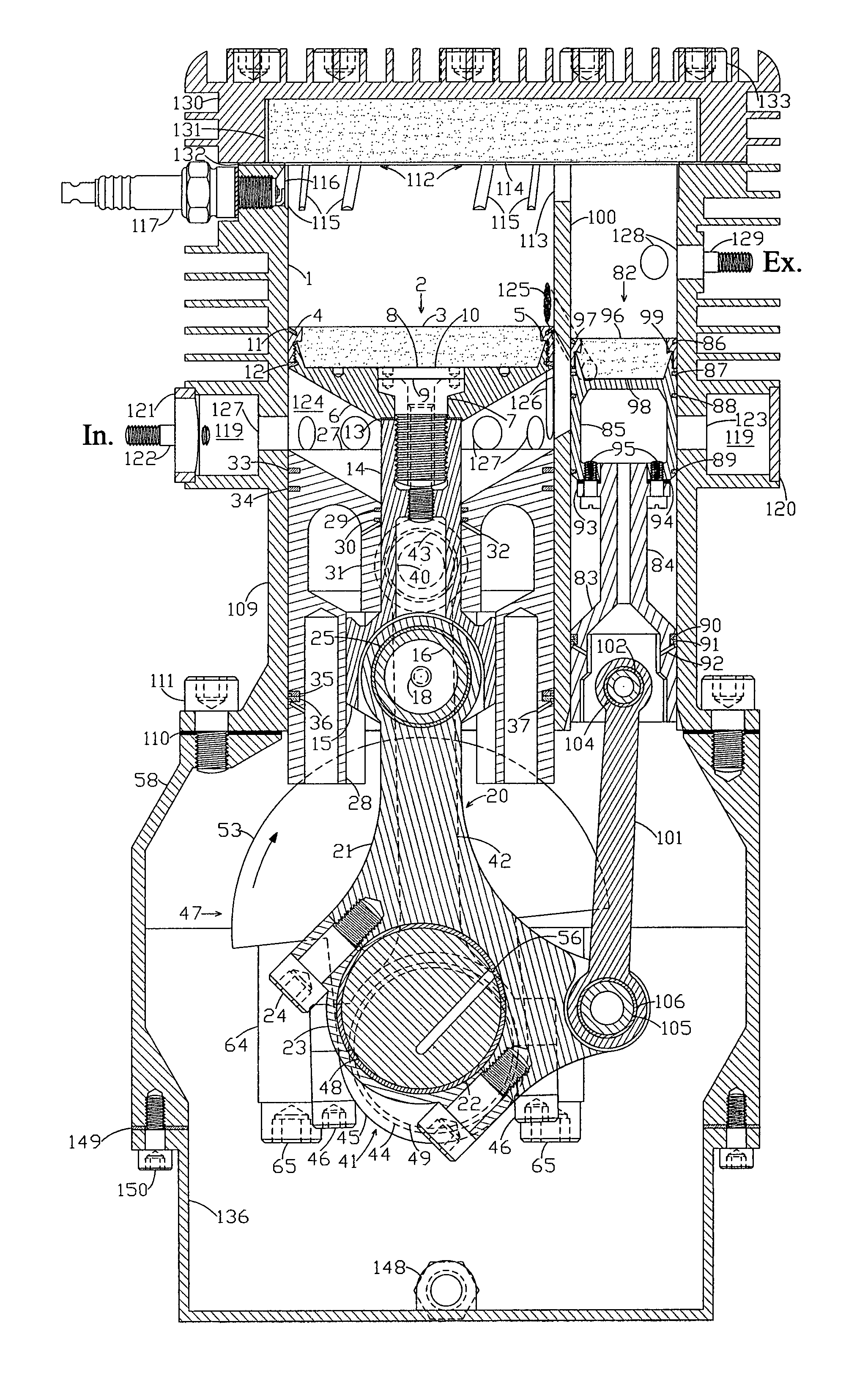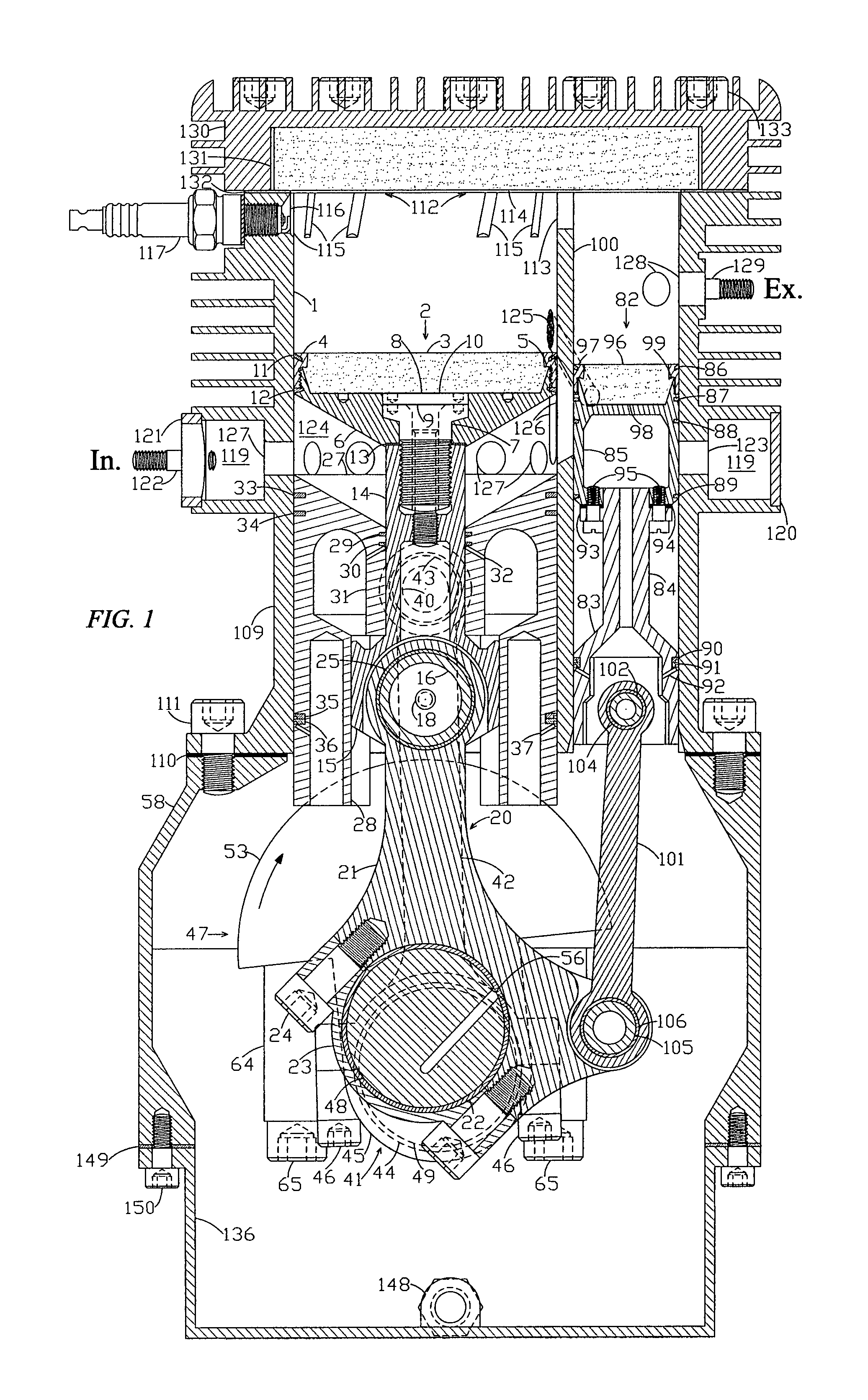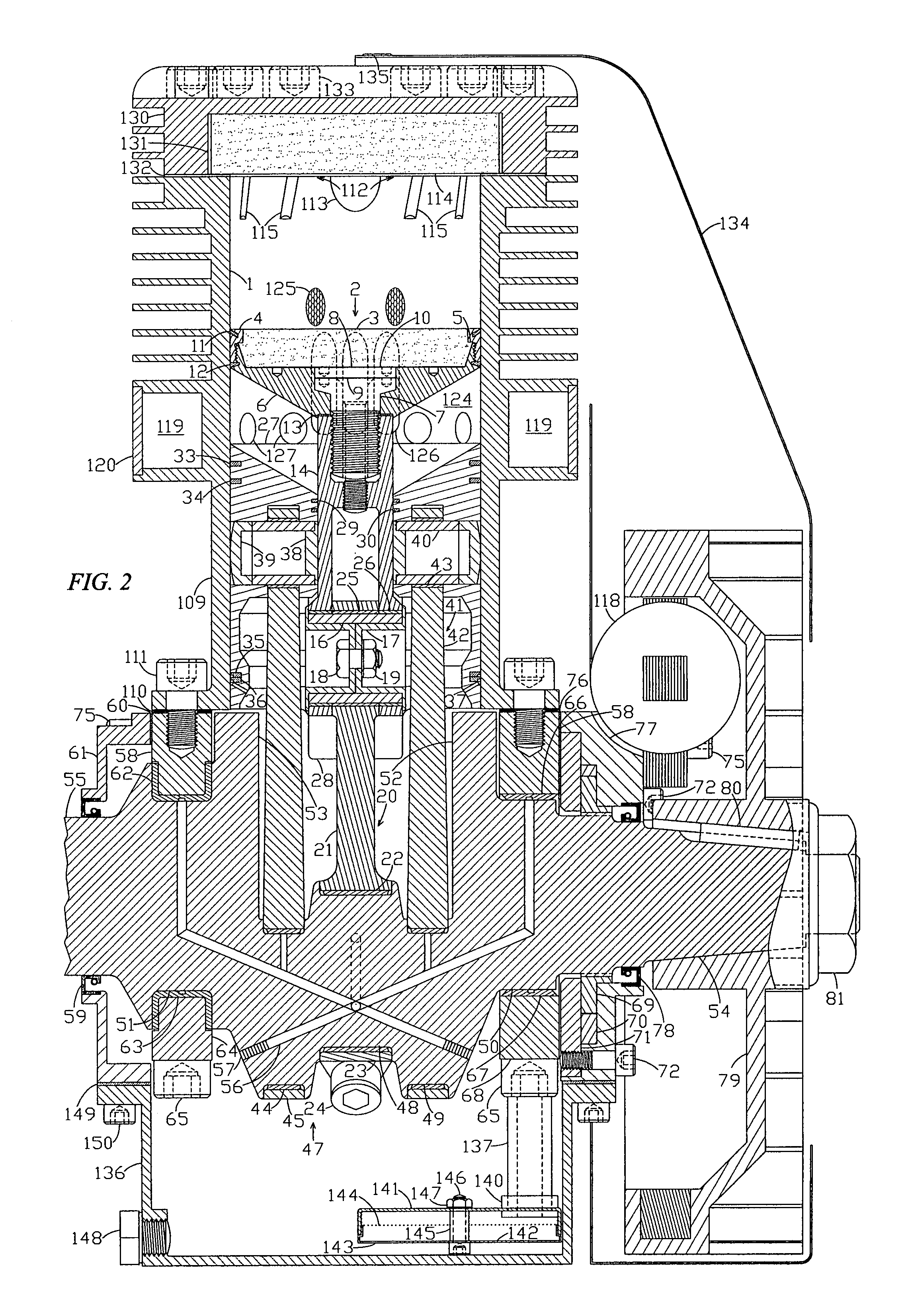Tandem-piston engine
a technology of piston engine and piston body, which is applied in the direction of piston engine, machine/engine, combustion engine, etc., can solve the problems of preventing the successful completion of the cycle, wasting as much heat, and not making maximum use of the heat generated, so as to prevent the absorption and wasting heat
- Summary
- Abstract
- Description
- Claims
- Application Information
AI Technical Summary
Benefits of technology
Problems solved by technology
Method used
Image
Examples
Embodiment Construction
[0048]Referring now to the drawings in detail, FIGS. 1 through 10. The engine has a main cylinder 1 that is fitted with a motor piston 2 of the crosshead type having a ceramic piston crown 3 that is clamped to it by a piston bezel 4. A conical upper surface on the piston-crown ledge 5 that has its vertex at the center of the lower surface of the piston crown is used by a mating conical lower surface on the piston bezel 4 to hold the piston crown 3 against a pistoncrown shim 10 that covers a titanium motor-piston base 6 and a locking-bolt 8. A piston-rod shim 13 is used to adjust the spacing of the motor-piston base 6 on a hardened and tempered steel piston rod 14 while a base bolt 7 clamps them together, and the locking bolt 8 with its height adjusted by a locking-bolt shim 9 prevents it from loosening. The piston-rod shim 13 must be chosen of the correct thickness to assure that the upper surface of the charger piston 27 firmly contacts the lower surface of the motor-piston base 6 ...
PUM
 Login to View More
Login to View More Abstract
Description
Claims
Application Information
 Login to View More
Login to View More - R&D
- Intellectual Property
- Life Sciences
- Materials
- Tech Scout
- Unparalleled Data Quality
- Higher Quality Content
- 60% Fewer Hallucinations
Browse by: Latest US Patents, China's latest patents, Technical Efficacy Thesaurus, Application Domain, Technology Topic, Popular Technical Reports.
© 2025 PatSnap. All rights reserved.Legal|Privacy policy|Modern Slavery Act Transparency Statement|Sitemap|About US| Contact US: help@patsnap.com



